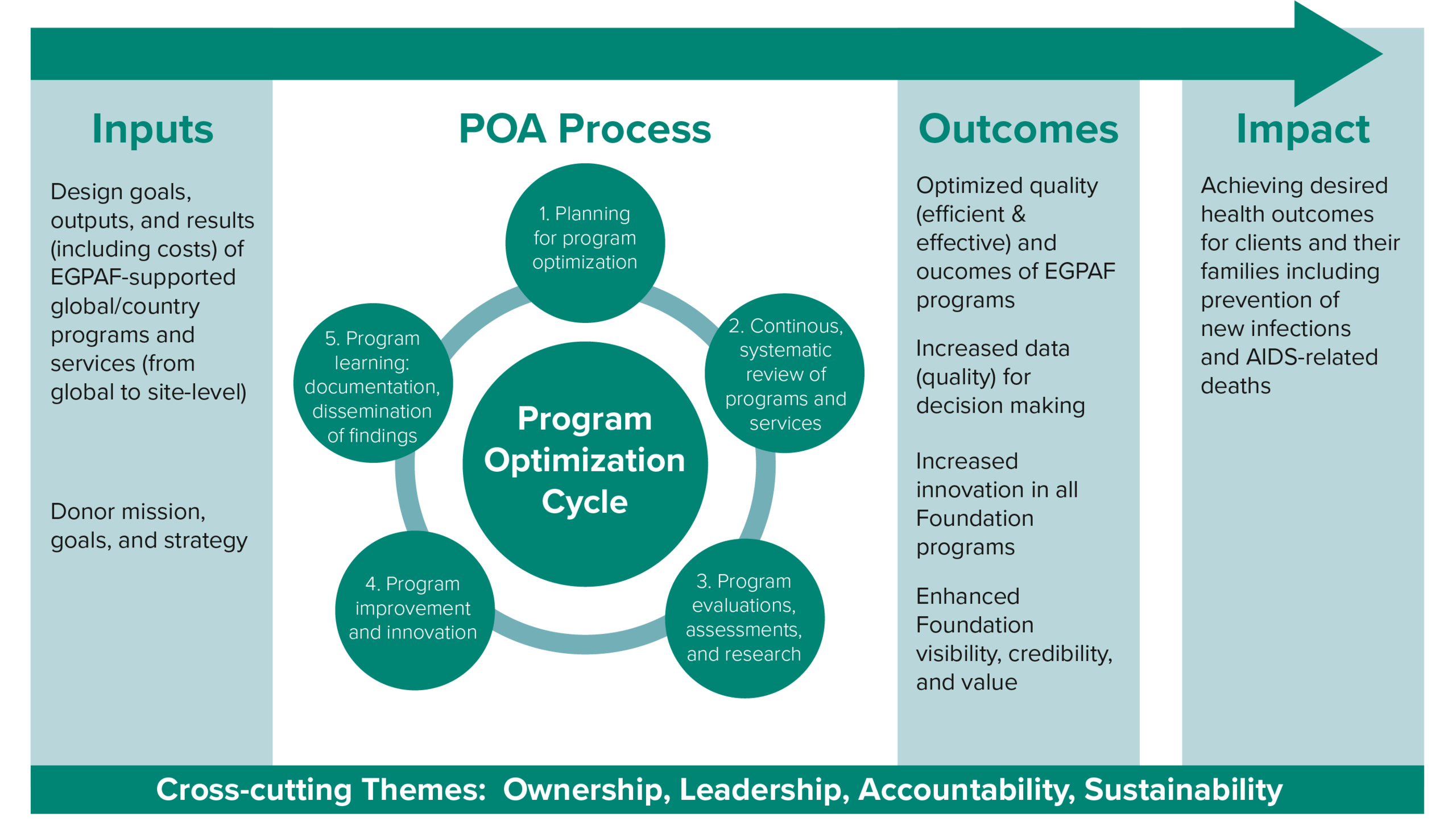Program Optimization Approach
The Elizabeth Glaser Pediatric AIDS Foundation’s (EGPAF’s) Program Optimization Approach (POA) is the application of standardized and continuous use of evidence and improvement science to enhance program design, implementation, quality, and impact.
POA specifically emphasizes integrating program assessments, evaluations, and data use with an overall focus on broader program improvement, which extends well beyond the typical focus on facility-level issues. Its objectives are to standardize processes for continuous improvement of programs, operations, and service implementation; maximize and measure the impact of programs and services; and generate an evidence base for innovation and dissemination. To date, EGPAF has adopted POA globally and established a POA Oversight Committee (G-POC) to provide direction. The G-POC defines EGPAF-wide optimization priorities that include: direct service delivery and technical assistance, as well as relationships between operations and programs; generating and using real time, patient-level longitudinal program data to measure intervention outcomes; conducting expenditure analyses for clients served and output delivered and identifying cost-reduction opportunities; and optimizing enrollment, adherence, and retention of HIV-positive pregnant women, children, and adolescents (particularly young girls) in HIV/AIDS prevention and treatment cascades. All EGPAF country programs have taken significant steps to pilot and adopt POA in the past two years. EGPAF will use this approach to continuously study and enhance existing good practices and incorporate new learning into the organization — accelerating progress toward our mission of ending pediatric HIV/AIDS.

Key Results
POA results in high-quality systems from clinical to operational, with improved staff functions, support mechanisms and cost savings.
- By implementing POA, EGPAF guided its Kenya program through a Think-Act-Practice Prudence (TAPP) initiative, wherein a market survey was conducted, technology was leveraged, contracts were renegotiated and a financial culture shift ensued. TAPP resulted in a US $700,000 cost saving for the program.
- Losing clients who are on antiretroviral treatment (ART) is one of the biggest challenges for HIV programs and clinics. The EGPAF–Uganda team sought to define the possible explanations for client visit delays, including the root causes for missed appointments, and use this information to develop interventions to support clients. After a series of interventions, the net loss in clients on ART at the end of each quarter decreased from 9,908 at the end of December 2018 to 2,959 at the end of June 2019. Retention in care increased from 94% to 98% over the same period.
- EGPAF–Mozambique implements an HIV/TB program in partnership with the Ministry of Health and provincial health directorates in Gaza and Inhambane. Mozambique is among the countries with the highest TB, multidrug-resistant TB, and HIV/TB burdens. In response, the EGPAF team – through POA – implemented key changes such as enhanced screening practices, survey targeting clinical staff to determining challenges with IPT, negotiation with provincial health directorates, use of electronic lists and introducing new patient filing systems among others. After two quarters of implementation, IPT completion increased from 30% to 54%, with an increase in patients initiated on IPT as well as those who completed IPT (end of Q2 2020 – Q4 2020)
